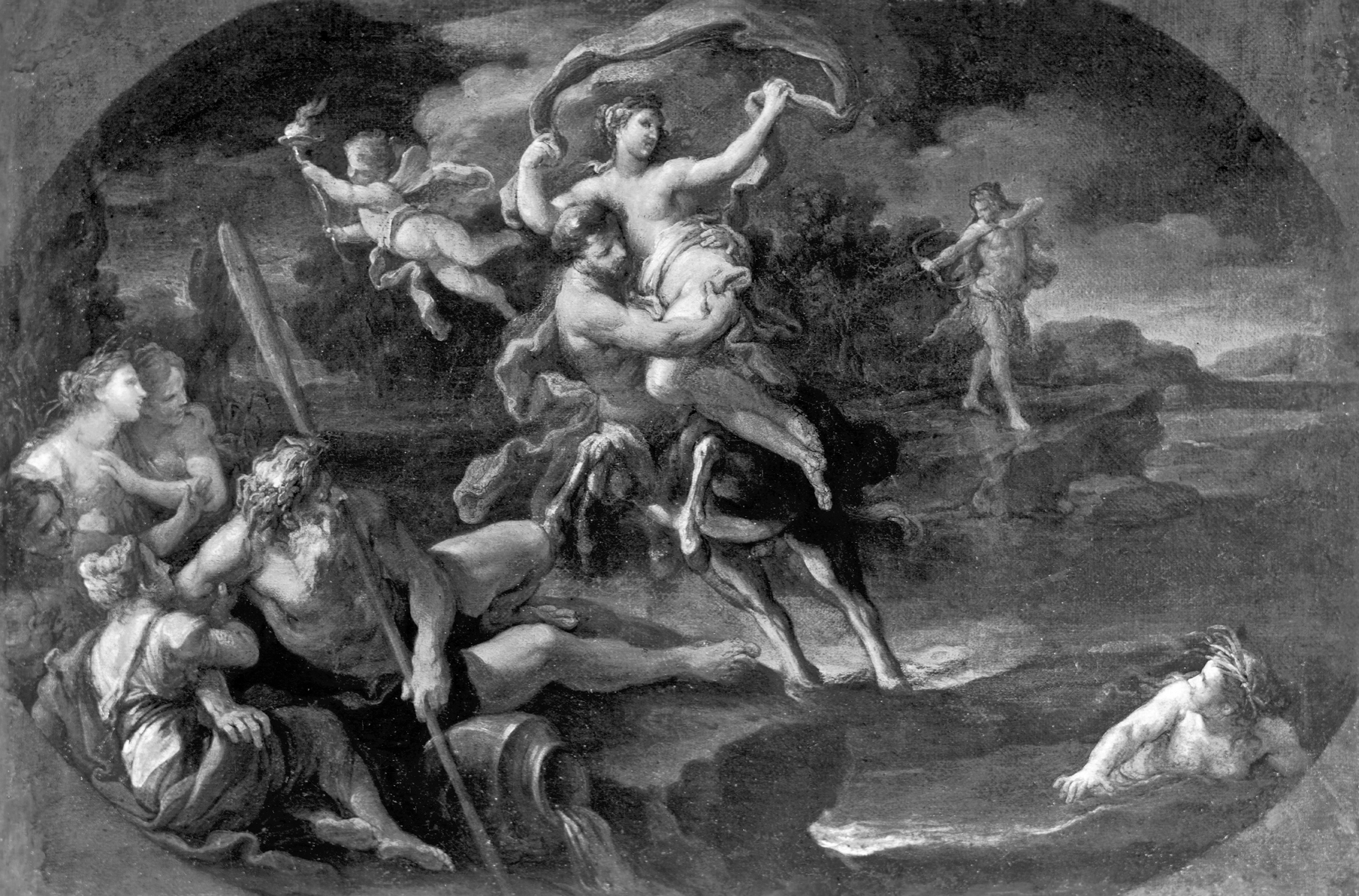The Abduction of Deianira
(Baroque Europe )
In a popular story involving the loves of the gods from Greco-Roman mythology, the centaur Nessus escapes through the Euenus River with the abducted Deianira, the wife of Hercules, who comes to her rescue. Clad in a lion's skin, he is about to shoot the arrow which will kill the centaur. The cupid with a torch symbolizes the amorous passions that motivated Nessus. The old man with the urn gushing water is the river-god Euenus, and the attending women are nymphs, spirits of the water. The oval painting field indicates that the painting was to be set into a larger framework, and, indeed, Pozzi was primarily known for his decorative ensembles.
For more information on this painting, please see Federico Zeri's 1976 catalogue no. 414, pp. 525-526.
Provenance
Provenance (from the French provenir, 'to come from/forth') is the chronology of the ownership, custody, or location of a historical object. Learn more about provenance at the Walters.
Don Marcello Massarenti Collection, Rome [date and mode of acquisition unknown] [1897 catalogue: no. 794, as Nicolas Poussin]; Henry Walters, Baltimore, 1902, by purchase; Walters Art Museum, 1931, by bequest.
Exhibitions
| 1995-1996 | Going for Baroque. The Walters Art Gallery, Baltimore. |
Geographies
Italy, Rome (Place of Origin)
Measurements
Painted surface H: 16 5/8 x W: 25 1/2 in. (42.2 x 64.7 cm)
Credit Line
Acquired by Henry Walters with the Massarenti Collection, 1902
Location in Museum
Accession Number
In libraries, galleries, museums, and archives, an accession number is a unique identifier assigned to each object in the collection.
In libraries, galleries, museums, and archives, an accession number is a unique identifier assigned to each object in the collection.
37.1836


